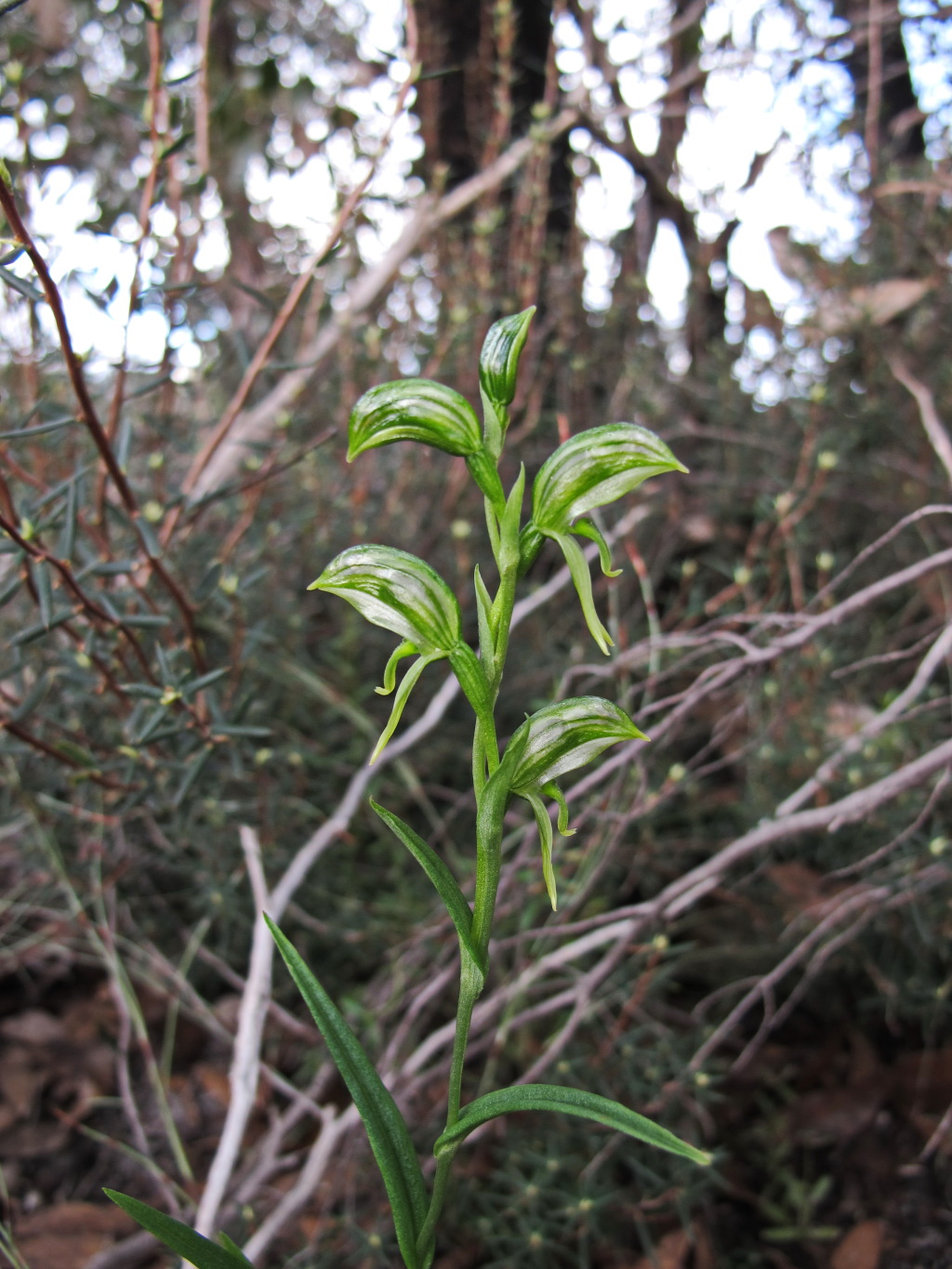Pterostylis chlorogramma
D.L.Jones & M.A.Clem.Flowering plant to 20–45 cm tall, stem leaves 5–9, spreading, linear-lanceolate, 2–6 cm long, 3–6 mm wide, dark green. Rosette leaves on a separate plant, 3–6, narrowly ovate to lanceolate, 10–25 mm long, 3–5 mm wide. Flowers 1–7, 1.5–1.8 cm long, shiny, translucent green with dark green stripes; dorsal sepal with short apical point; lateral sepals deflexed, conjoined part oblong, 13–16 mm long, 6–7 mm wide; petals slightly falcate, with a well-developed basal flange. Labellum narrowly oblong, 6–7 mm long, 2.5–3 mm wide, emerald green with a dark green, truncate basal mound and central stripe, covered with numerous, short, transparent, bead-like cells, longer and hair-like at base, apex attenuate, notched. Flowers Jul.–Sep.
LoM, Wim, GleP, VVP, GipP, OtP, Gold, CVU, GGr, EGL, EGU, WPro, HSF. Also SA, Qld, NSW. Apparently localized in Victoria, but exact range uncertain due to confusion with closely allied species. Grows in moist areas of heathy and shrubby forest, on well-drained soils.
Distinguished from Pterostylis smaragdyna by its smaller, paler flowers and a smaller labellum with less developed lateral lobes. Some plants of intermediate size can be difficult to assign to either P. chlorogramma or P. smaragdyna.
Jones, D.L. (1994). Pterostylis. In: Walsh, N.G.; Entwisle, T.J., Flora of Victoria Vol. 2, Ferns and Allied Plants, Conifers and Monocotyledons, pp. 798–830. Inkata Press, Melbourne.
 Spinning
Spinning
